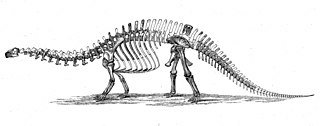
I was involved in a serendipitous exchange today on Twitter, that started with my friend James musing about yetis possibly being a kind of undiscovered polar bear. I said that given the evidence of polar bear distribution of polar bears and yeti sightings it would be unlikely but not impossible for it to be a kind of bear. One of his followers, Helen, joined in and said something about dinosaur skeletons being reassembled in weird ways to make monsters and it got me thinking about Second Language Acquisition (SLA) and language teaching.
SLA is a relatively new science, much like paleontology. We know some things from observing evidence (if how people appear to learn or not in SLA; of typical anatomical arrangements in paleontology) and making hypotheses to test in order to go on and construct theories.
We also have language teaching. Some language teaching is informed by SLA and some is not. Some fossil gathering is done by people who read up on paleontology and some is done by people who are interested in finding cool stuff, and some is done by accident.
What’s the point? Well, have you ever heard of a brontosaurus? Of course you have. It’s a massive thing with a long neck and a long tail. And the wrong head for years. And endless debates about whether it is the same as an apatosaurus. There is mainly scientific agreement to say the brontosaurus is a kind of apatosaurus. There are still some who say it warrants a distinct genus.
There are plausible ideas in language teaching. Grammar can be learned in a linear way from simple to complex, that massive exposure leads to massive gains. Unfortunately the evidence doesn’t hold up. Grammar (or actually morphology) appears to be learned in a sequence of acquisition with a lot of gaps in the evidence, rather like the allegorical dinosaur skeletons. Some people will go with what we know from science and hold out for the gaps to be filled before making bold claims. Others may try to put a pile of bones together to make a “Harryhausen Cyclops” (thanks Helen) and hoping it’s so, despite a lack of evidence or even overwhelming evidence to the contrary.
There’s also overplaying what science says and making conjectures look like fact. What colour are dinosaurs? Green, yeah? Lizards are green. But not all. There are lots of different coloured reptiles. The skin colour of dinosaurs is conjecture, based on evidence, but taken as fact, per se. Babies are exposed to loads of language, babies get fluent in a language therefore exposure equals acquisition? Perhaps, but there are more factors than that, as any migrant language teacher knows from colleagues who are exposed to the local language but never acquire it (and often never bother to try and learn it).
So what? Well, I think that, no shit Sherlock, getting more SLA literate and informed would help the profession to be less like would monster makers but more like people putting a stegosaurus together. Or having a collection of ammonites, which, while not sexy, are important to natural history.